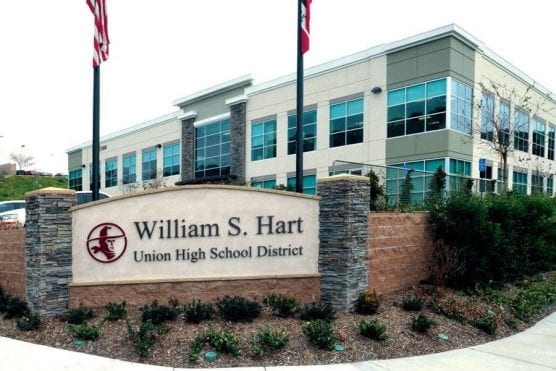The William S. Hart Union High School District governing board discussed the history of Hart High’s Indian mascot — and whether it should be changed — during a virtual meeting Tuesday.
The board considered Tuesday’s virtual discussion an opportunity to take a more in-depth look at the issue and to learn about the history and any concerns about the Indian mascot.
During the public comment section of the meeting, Hart High School teacher Greg Borish asked the board to bear in mind that a lot of people are offended by the use of this mascot.
“When I talk with people outside our valley and our state, many are shocked, not in a good way, that we are still the Indians,” Borish said in his letter to the board. “I feel ashamed that this is our mascot.”
Also writing to the board, Jake Young, a member of the Hart High class of 1995, said he believed that the change of the Indian mascot would be expensive and ignoring history.
“Calls to retire the Hart Indian mascot are absurd and lack any care for the historical significance of the Hart school district and Hart High School,” Young said in his letter, later adding, “The majority of your constituents do not want you wasting time on this issue, considering all the pressing issues the school board, Hart district and Hart High School have to deal with; pandering to the woke would be a dereliction of duty.”
Before board members were given time to ask questions, current and former Hart principals laid out the history and controversy made by the mascot.
After its founding in 1945, the student body of Hart selected the Indian as their mascot. When the issue of the mascot was brought up again in the 1990s, Laury Strauss, former principal of Hart, said the school took a number of steps to limit the insensitivity of the mascot’s use.
In the 1990s, the school met with members of the American Indian Movement to become more educated about concerns regarding the mascot, Strauss said. Following those meetings and input from the students and community stakeholders, Strauss had some of the words to the Hart fight song and school chants changed or retired, banned the wearing of headdresses during rallies, and required approval for any logos with the depiction of the Indian mascot.
Current Hart High Principal Jason d’Autremont also laid out how the “Indian” name is scattered throughout Hart’s campus, and that 40 other California school campuses use a Native American mascot.
So far, campus site staff have stopped student section leaders from wearing headdresses, using teepees, calling staff/poles “spears” or making stereotypical noise calls during school events. A wooden Indian was removed from the ASB office, a headdress formerly in the school’s trophy case was removed and d’Autremont addressed these changes on Hart TV last year.
There are only two options for the school moving forward, d’Autremont said: keep the mascot and use education/training to continue the culture around the Indian mascot in place; or change the mascot, which would take time and cost the district money. However, the community, the principal, could have some input about the decision.
Hart’s mascot discussion comes after last year’s Black Lives Matter protests, which prompted three Hart alumni to create a petition that more than 18,000 people signed, which called for a mascot change, d’Autremont said.
Julia Estrada, a member of the class of 2020, followed d’Autremont’s PowerPoint presentation with one of her own, regarding the past use of Hart “Indian” caricatures, citing studies from the American Psychological Association and the University of California, Berkeley, that reported the use of these mascots promote harm and ignorance toward Native American culture.
Estrada also said that through her conversations with the Fernandeno Tataviam Band of Mission Indians — a tribe indigenous to the Santa Clarita Valley — she noted their support for the “removal, retirement and replacement of race-based mascots.”
The board members expressed their understanding of the frustration on both sides of the issue, and Superintendent Mike Kuhlman said they would hear from members of the Tataviam tribe at their Feb. 17 board meeting.
Like this:
Like Loading...
Related





 Tweet This
Tweet This Facebook
Facebook Digg This
Digg This Bookmark
Bookmark Stumble
Stumble RSS
RSS



























REAL NAMES ONLY: All posters must use their real individual or business name. This applies equally to Twitter account holders who use a nickname.
0 Comments
You can be the first one to leave a comment.